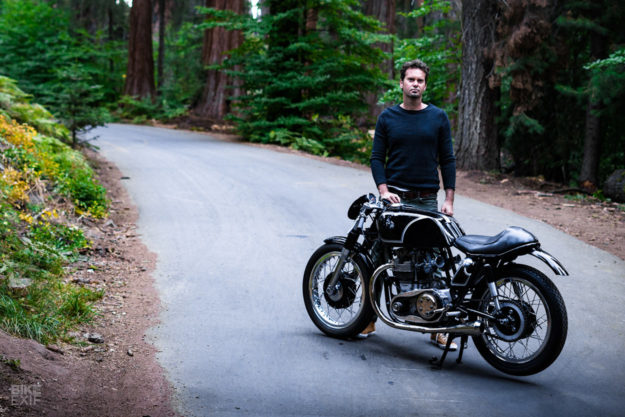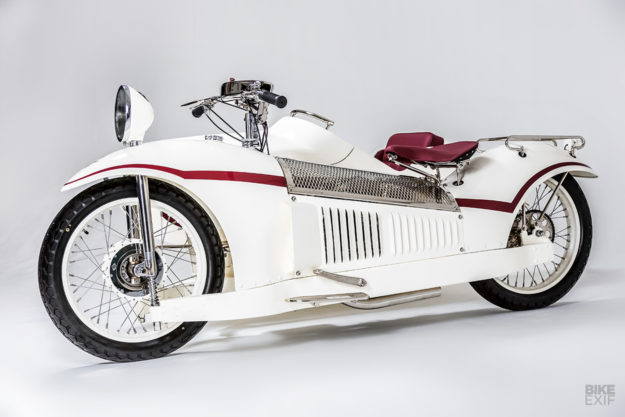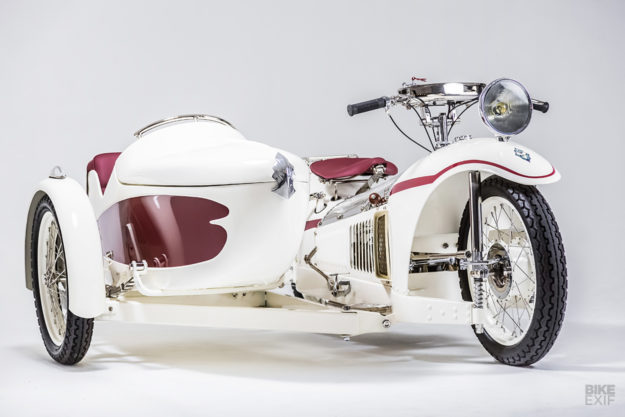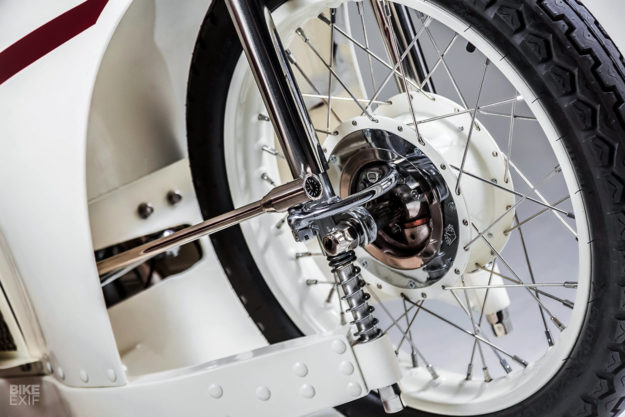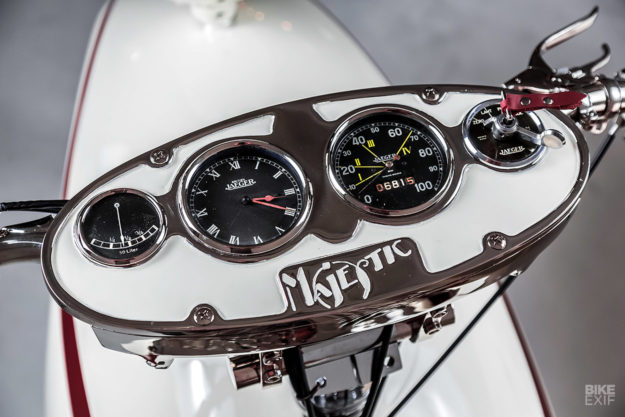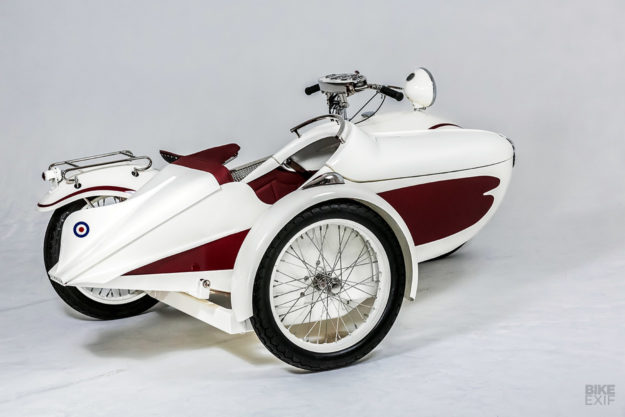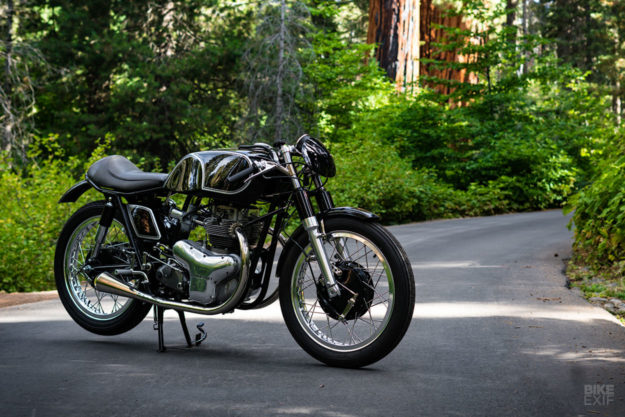
The bikes that are revealed on these pages are usually hot off the press. The shoot is finished, the images are graded and an email lands in our inbox within a couple of days.
This amazing Kawasaki, however, first surfaced two years ago at The Quail Gathering. And it’s only just been shot properly. But that’s okay, because the bike took master builder Mike LaFountain seven years to complete—and nearly broke him in the process.
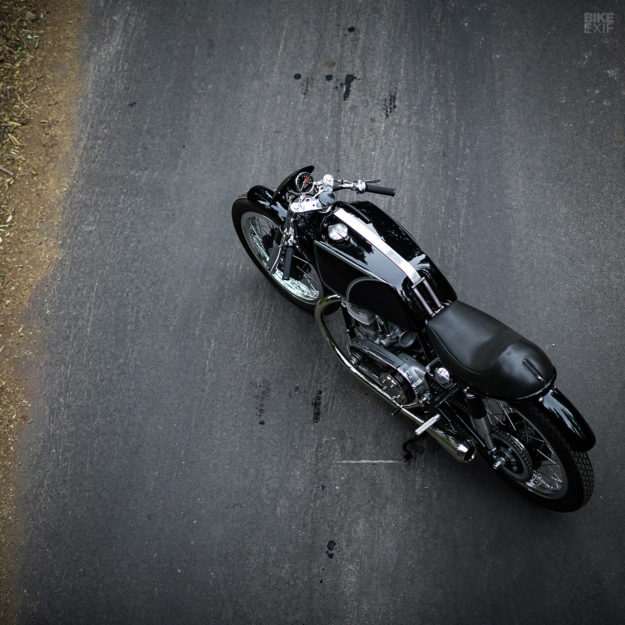
Mike has created a stunning replica of the ultra-rare W1R, which was Kawasaki’s late 1960s equivalent of the legendary Matchless G45 production racer.
“Years ago, I came across a photo that would haunt me for nearly a decade,” says Mike. “It was a blurry black-and-white shot of a motorcycle that I’d never heard of.”
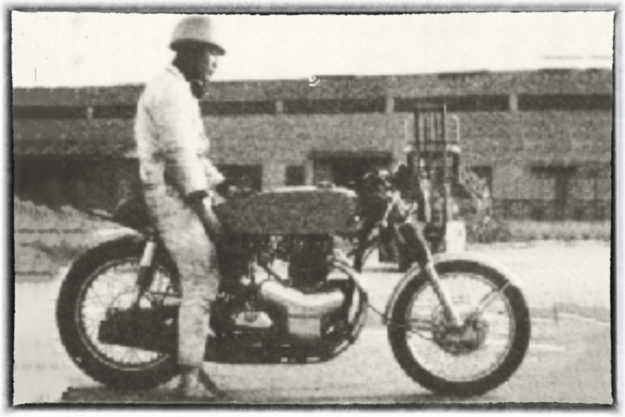
This was the only known shot in circulation of the W1R. It was technically a race version of the W1 650, which was a pretty rare motorcycle itself. The W1 650 was Kawasaki’s first attempt to break into the larger displacement motorcycle market in North America, and in many ways a copy of the BSA A10.
Mike scoured the net looking for more information on the elusive W1R. “I even got a Japanese friend of mine to dig through the archives of Japanese websites, but there is almost no literature on it.”
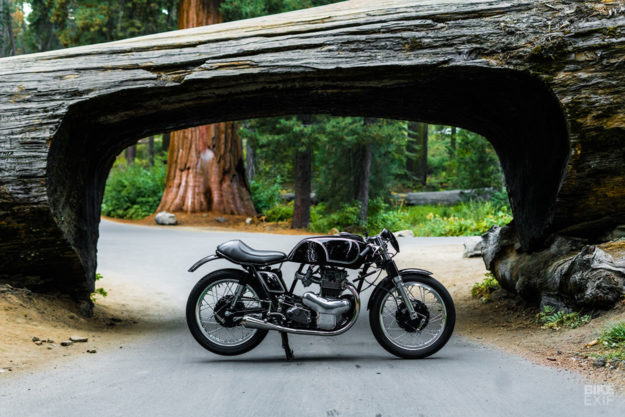
At Raccia Motorcycles, Mike’s forte is taking Japanese motorcycles and recasting them in the mold of classic British and Italian race bikes—while using period Japanese parts. (“That way, the bike would technically still be Japanese.”)
He quickly realized that the W1R project was a chance to take that ideology a step further, using only OEM Kawasaki components. But there was no real chance to make a mechanically correct replica, due to the lack of information.
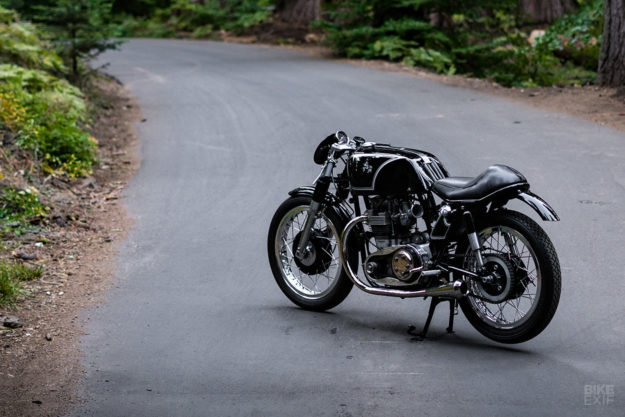
“I decided to fill in the gaps with the Matchless G45, my favorite GP race bike of all time. As in Jurassic Park when they used frog DNA to fill in the gaps when creating dinosaurs, I would do the same with one of the most iconic race machines of all time.”
It took seven years and thousands of dollars, but Mike’s mission has been accomplished. After tracking down a W1 650, he’s rebuilt it with parts from 25 different Kawasakis, ranging from 1966 to 1975—plus a 1980s fuel tank.
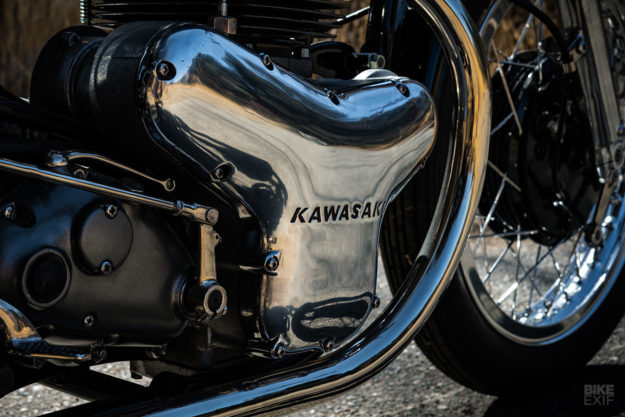
Every dimension of the ‘W1R’ relates to the Matchless—from the frame dimensions to the handlebar length, exhaust pipe diameter, tank strap and so on. “Everything is ‘spec’ to the original, except it’s all Kawasaki parts,” says Mike.
“I found a frame and motor from a 1967 W1 in Minnesota, after about a year of searching,” he recalls. “The downtubes and cradle of the frame are surprisingly similar to the G45: just the spine and tail section needed alterations.”
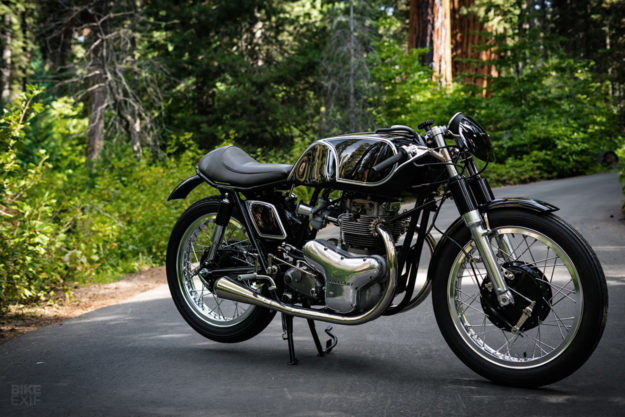
Mike made the new upper frame section out of one piece of DOM steel, using the exact dimensions and angles of the Matchless. Over three full days spent in a museum two hours away, Mike measured up a G45 extremely carefully, without touching anything.
“Luckily the curator was nice enough to allow me to study the bike, and take measurements. I would spend hours logging every square inch of the historic race machine. It was like playing the game ‘Operation’ as a kid, except with an $80,000 motorcycle!”
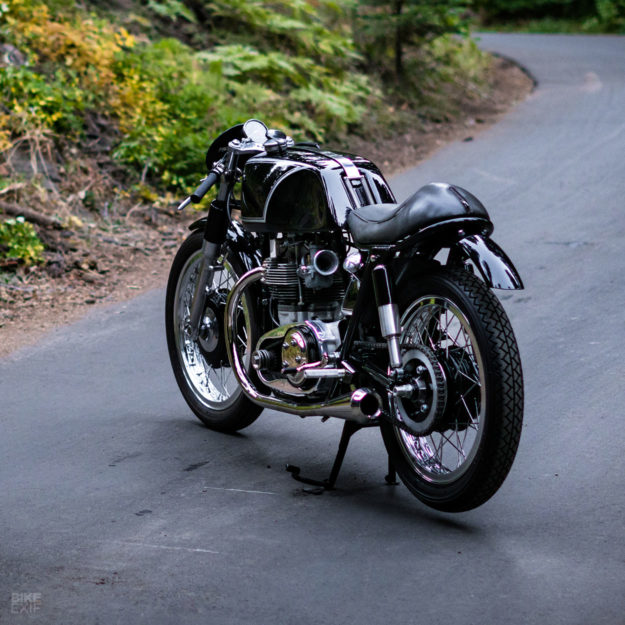
Mike’s installed modified Kawasaki Mach III forks, slotting them into modified W2TT triples. The shocks are stock W1, in as-new condition. The wheels are also from a W1, with the front hub machined, polished and painted to emulate the look of the conical hub on the G45.
The tires were a tough call. “I ended up going with Avons, because they are beautiful and a great functioning tire,” says Mike. “In reality, to keep to the theme, I probably should have chosen Dunlop K181s—a Japanese tire.”
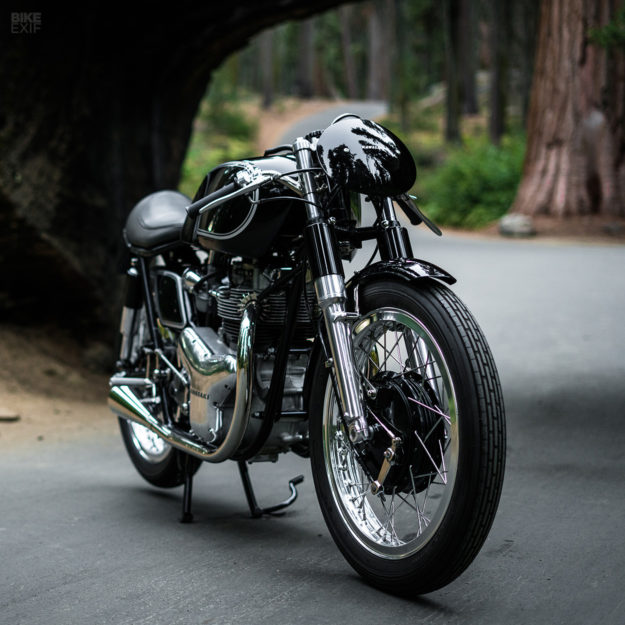
That—and the gas and oil caps—was the only time where the aesthetics won out over the concept.
Despite the famously bulletproof nature of the engine, Mike gave it a complete tear down and rebuild, using NOS pistons and rings.
“One of the great things about these bikes is the engineering,” he says. “It may look like a Brit on the outside, but the internals are Japanese all the way. I heard quite a few stories of W1s sitting for 30-plus years and firing right up with fresh gas and a new battery.”
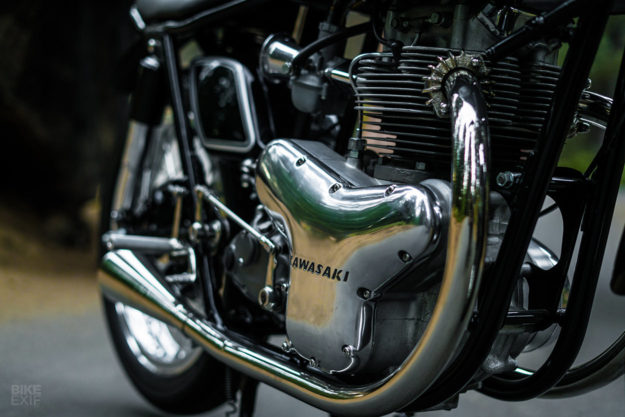
To be on the safe side, Mike rebuilt the gearbox—and the Mikuni carbs, swiped from a W2. The W2 also supplied the exhaust headers, but he’s upgraded the exhaust system with modified KZ1000 mufflers.
“Over 90% of this machine is Kawasaki,” he reveals. “But there are a few parts that had to be made up, since Kawasaki never built anything closely resembling the G45.”
So the rims are not from Kawasaki, but Excel—which is a Japanese company. The gas cap is a Monza replica, and the tank strap, number plate and tachometer bracket are custom made.
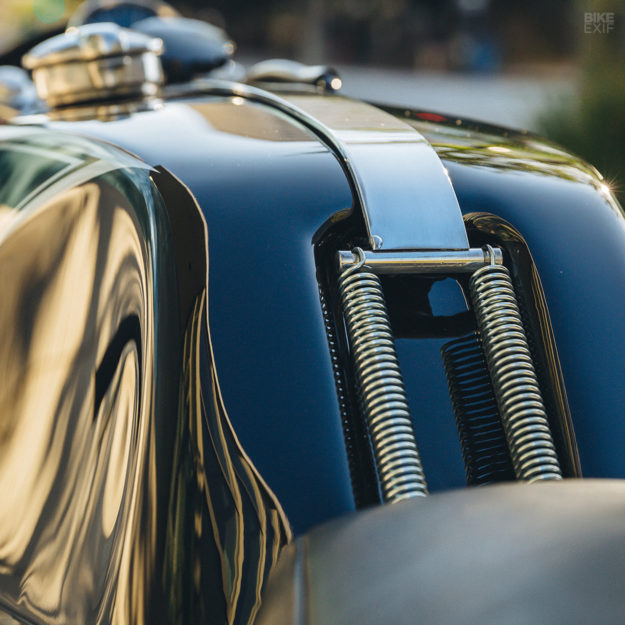
The tank is from 1982 Kawasaki GPz750, heavily modified to look right and fit the frame. “That was by far the toughest endeavor,” says Mike. “I went through numerous OEM tanks before finding the right one. I finally figured it out in the final year of the build; it was the last major hurdle of the whole project.”
Further back is the oil tank, with modified side covers from a 1974 Kawasaki H1, cut in half, flipped upside down and widened.
The rest of the bike is a smorgasbord of Kawasaki parts that work together remarkably coherently. The front brake is from a 1965 W2650, the bars are a modified KZ440 bend, the grips are from a Kawa A7, and the throttle is from a F21M “Green Streak,” the first production Kawasaki to wear the famous lime green paint.
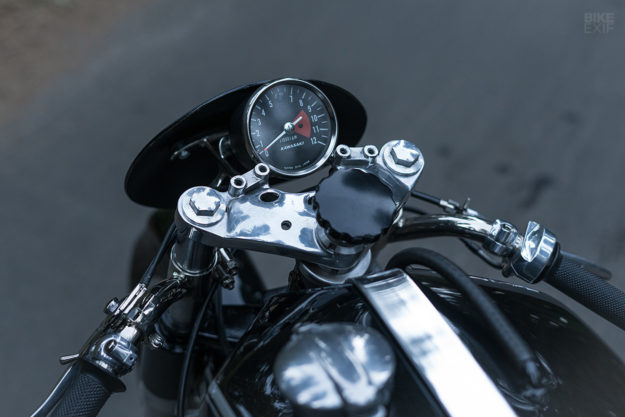
“Meticulously boxed, beautiful NOS parts would arrive, wrapped in their original packaging and smelling of the 60s, only to find themselves cut into pieces 30 minutes later,” Mike says.
“Some made it, but others were not as fortunate. I can’t tell you how many gems ended up in the trashcan. I had to force myself to not think about what I was destroying, or how much I’d spent. I probably won’t be making a lot of friends at the local VVMC rally any time soon!”
Mike has made a lot of friends at The Quail Gathering though, where his W1R wowed the crowd—even though most were unaware of the extraordinary backstory.
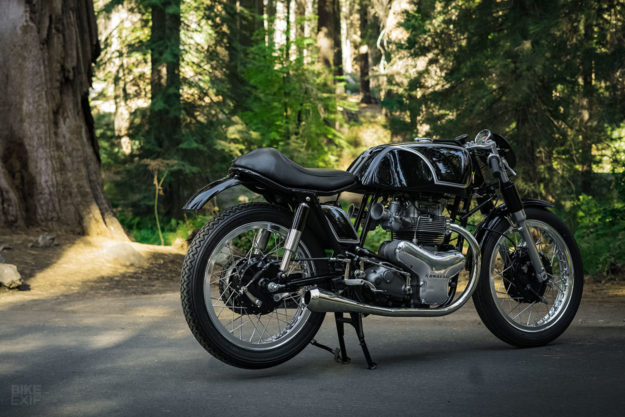
“This project lived between two worlds,” Mike says, looking back on the years of toil and frustration. “In some ways it felt like a restoration. Yet on the other hand, it’s as custom as custom gets.”
“Although it may appear original, every part on this machine was cut, modified or altered in some way, creating something that is completely unique.”
The story has a happy ending: this Kawasaki now lives in the salubrious surroundings of the Haas Moto Museum in Dallas. “It’s a great ending to an arduous task,” says Mike, with obvious relief. “Bobby Haas truly understands and embraces the concept.”
“But it was a daunting piece of work that I don’t have a desire to repeat any time soon.”
Raccia Motorcycles | Facebook | Instagram
